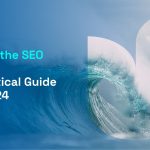Why authentic content attracts an audience (and backlinks)

What is authentic content?
You don't hear this question from SEOs very often. In the world of linkable content, the audience is king. Too often, the audience becomes a number. Content creators tend to cater to the numbers. They want to know how many people are searching for a term and how they can get a piece of the search pie.
Once the content is published, the authors and the websites they write for want to increase their reach through social media. Here, too, large numbers are the goal. But isn't that putting the cart before the horse?
One metric that SEO content creators often use to inform topics is keyword search volume. The problem with this is that just because you create an article based on high search volume keywords doesn't mean your audience will click on it, and it doesn't mean your article is compelling and useful enough to get backlinks and engagement on social media.
To truly engage an audience, your content must sizzle with authenticity and compelling insights on a consistent basis.

Definition of authentic content
Authentic content is any kind of media that exists because it must exist. Think of authentic content like arms or legs or other appendages.
Our appendages have evolved to their current form for a reason: they serve a purpose and enable us to solve problems. Man has a niche. We live in a world of ideas.
Our arms, hands, and fingers enable us to do the most basic things-eat, drink, use tools to build shelter-so that we can communicate complex ideas. Our arms and hands are also tools for communicating ideas through the written word, videos, memes, and so on.
Authentic content is necessary in your niche. An SEO blog would not be complete without an article on how Google works and why the search engine displays the results it does; if you want to do SEO, you need to understand Google. Likewise, a blog about search engines needs an article about search engines that you can use instead of Google.
Authentic content allows a website to do what arms and legs do for the human body: get where you want to go. In this case, the target is the first page of a SERP.
Authentic content vs. basic content
The difference between authentic content and basic content is that authentic content has more scope. Basic content is definitely authentic, but only covers the primary building blocks of a company's specialty.
Authentic content starts with basic content and then encompasses all types of content in a brand's arsenal. Authentic content can include the following:
- Resource Article;
- Instruction article;
- Informative or even entertaining videos;
- Food for thought;
- Current topics;
- Directories.
Authenticity is a property that any article can have, while basic or definitional content is a subset of articles that future articles will refer to when addressing specific queries with a narrower focus.

How to create authentic content
Follow these steps to create authentic content that has a kind of irresistible electricity on the page:
- Think hard about the mission and core values of your company. What problem(s) are you trying to solve for people? What is the human element behind your product or service that everyone can identify with?
- Perform a keyword analysis. Which of your target keywords are particularly important to the mission and core values of your website/company? Which of these important keywords rank well and which not so well? Which have higher click-through rates in the SERPs?
- Perform OnPage content analysis and competitor analysis. (these are part of the linkable content creation process). Are there cornerstone or perennial content items that are missing from your website? How does your content compare to that of your competitors?
- Monitor the Internet atmosphere with an eye toward current events and trends, as well as where your niche and business stand in the overall scheme of things. If you were a member of your target audience, what topic(s) would be incredibly useful for a website like yours right now? Which topic(s) would be a perennial favorite and continue to be a good point of reference in the future?
- Look at relevant articles on leading websites that are not necessarily niche specific. What do these items do well? Do they have particularly meaningful titles? Longer or shorter word counts? Which pain points are addressed? What kind of formatting do they use? Do they use video or multimedia approaches? Is the best post part of a series of articles or does it stand alone? What does the top performer do better than his competitors?
Now put it all together: First and foremost, your ideas for authentic, traffic-boosting content will be based on what's most important to you as a person, not as a businessperson looking for sales.
Next, you'll explore how your values and resulting ideas relate to your target audience's online activities. The competitive environment also plays a role. When it comes to successful competitors, authentic content is likely to fill a void.
Finally, you'll examine the Internet in general to gain a better understanding of how to make that top-funnel content shine. The end result should be a set of ideas for authentic content you can be proud of, including evergreen articles and topical posts.
Want to learn more about onsite and competitor analytics, what a content gap is, and how top-funnel content creation works? Contact us and learn more.








